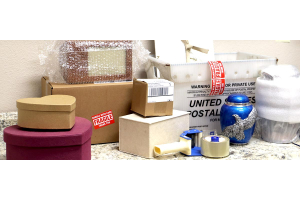
After receiving the cremated remains of a loved one, you have many options. You can keep cremains in a beautiful urn at home. You can scatter ashes in places of special meaning. You can turn cremated remains into pieces of art or jewelry.
While all good options, they lack a certain level of permanence. Future generations might want to be able to visit a spot where they can find the remains of their ancestors.
Chester French Stewart, chairman of French Funerals and Cremation in Albuquerque, tells the story of a young woman who flew from New York to New Mexico to visit the grave of her grandfather. However, Grandpa had been cremated and the remains scattered in the mountains with no record of the exact spot.
Stewart said, “She began weeping and said, ‘How could you do such a thing?’ We’ve found over the years that when people don’t have a permanent place of remembrance to visit, they often regret it.”
“While they’re honoring the request of the person who died, I usually tell people it’s worth thinking about taking at least a part of the cremated remains and putting them in a permanent place to visit,” Stewart explained. “Often, it skips a generation; it’s not so much the kids that are interested, but the grandkids who are trying to find their roots.”
For those who want to give cremated remains a permanent resting place, here are a few options to consider.


Earth Burial
Cemeteries are responding to the rising cremation rate by creating burial plots specifically for cremated remains. Smaller in size than a full body burial plot, they are also lower in cost. Most cemeteries that offer perpetual care will require a burial vault for cremated remains in addition to the container holding the ashes.
The depth of a cremains plot is not as deep, generally three to four feet. The cemetery’s fee for opening and closing a grave would also be less, some charging half the cost of a full body burial.
Columbarium
A columbarium (columbaria in the plural) is a structure for the storage of urns holding cremated remains. The term comes from the Latin columba, which means dove, a reference to dovecotes, the compartmentalized housing for doves and pigeons.
In a cemetery, you might find a wall with cremated remains placed within niches, and memorial information carved into the cover of the opening. Columbaria may also be part of a cemetery’s mausoleum or found within a church.


Placement with Pet Ashes
Many families regard their pets as members of the family and a growing number of people want to be buried with their pets. Some funeral directors will look the other way if a person wants the cremated remains of a pet put into a casket with the deceased. While most cemeteries do not allow burial of people and pets, a few places provide a permanent resting place for cremated remains of humans and their beloved animal companions.
People and pet combination cemeteries are few and far between in the U.S. Best Friends Forever in Albuquerque is the only cemetery in the Southwest to accommodate side-by-side cremated remains burial or columbarium placement. Hillcrest Memorial Park People and Pet Gardens in Hermitage, Pennsylvania offers whole body burial for people with their pets in the same or adjacent lots.
Scattering Gardens
Many cemeteries have scattering gardens with flowerbeds, shrubs and trees. These provide a dedicated place to scatter ashes and still give families a place to visit and reflect. Some cemeteries give families the option of inscribing their loved one’s name, date of birth and date of death on a nearby memorial wall or monument.
Underwater Placement
For those who love the ocean, a creative permanent placement is to become part of a memorial reef. Eternal Reefs creates living environmental memorials with cremated remains mixed into concrete reef structures placed in the Atlantic Ocean and the Gulf of Mexico.
Families can participate in casting, viewing and dedication ceremonies for specific reef development projects. Scuba enthusiasts can then visit the remains of loved ones as the reefs grow and develop, supporting healthy ocean life.
All of these options provide a permanent site for family members to seek out the cremated remains of their forebears in the near and distant future.
Gail Rubin is The Doyenne of Death™ and author of The Family Plot Blog and the award-winning book A Good Goodbye: Funeral Planning for Those Who Don’t Plan to Die. Visit her website, www.AGoodGoodbye.com.






